Energy Harvesting Using a Stacked PZT Transducer for Self-Sustainable Remote Multi-Sensing and Data Logging System
Abstract
:1. Introduction
2. Methodology
2.1. Brief Descriptions of the Functional Blocks of the System
- Energy harvester: The energy harvester is a custom-designed stacked piezoelectric transducer that harvests the mechanical vibrations caused by the roadway traffic into electrical power. Piezoelectric materials have the intrinsic property of generating surface charges while subjected to stress and strain. Based on this property, piezoelectric materials are used as energy harvesters and sensors as well. Lead Zirconate Titanate (PZT) material was used to fabricate the transducer. The custom-fabricated stacked PZT transducer is the PEG used to generate the necessary power to run the remote multi-sensing system.
- AC-DC energy converter: The signal generated from the stacked PZT transducer is intrinsically a damped sinusoid signal with high amplitude and having multiple consecutive peaks. To charge the charge storage device, which is a rechargeable battery pack, this damped sinusoid signal must be converted into a useful DC signal. However, the prime objective of the energy converter is to collect maximum charges generated by the stacked PZT transducer in both the positive and negative cycles of the input signal. The converter can be modified to convert signals from a non-cyclic alternative energy source such as Thermoelectric Generator (TEG).
- Sensory data acquisition and power management: The sensory data acquisition, computation, and power management are done by a microcontroller that carries the program to control the connected hardware of the system and also conducts the power management to run the system at low power. The microcontroller performs software-driven hardware control, data acquisition, data linearization, data storage, and data transmission using wireless communication. Several communication protocols are incorporated in the program to establish communication between peripheral devices dedicated to particular functions. For instance, the Serial Peripheral Interface (SPI) protocol was used by the microcontroller to establish communication with the micro SD card and the Bluetooth module.
- Wireless communication using Bluetooth module: A Bluetooth module called HC-06 is used as the module for wireless communication. Aforementioned, the module is connected to the microcontroller using Serial Peripheral Interface (SPI) protocol which allows the I/O pins of the microcontroller to act as a serial bus for data transfer. The HC-06 module has a range of 10 m and runs at low power based on Bluetooth Low Energy (BLE) technology. An app on an Android device such as a tablet or phone can display the data stored in the micro SD card.
2.2. Fabrication of the Stacked PZT Based Transducer
2.3. Design of AC to DC Energy Converter for the Stacked PZT Transducer
2.4. System Power Management Utilizing Microcontroller Internal Clock Prescaling and Sequential Hardware Switching
2.4.1. Prescaling of the Internal Clock Frequency of the Microcontroller to Reduce Power Consumption
2.4.2. Implementation of Sequential Hardware Switching to Cope with Energy Limitation
2.5. Vehicle Weight and Axle Count Sensing Using Predetermined Quantized Force-Voltage Relationship
3. Experimental Setup
4. Results and Discussion
5. Conclusions
Author Contributions
Funding
Acknowledgments
Conflicts of Interest
References
- Winslow, K.M.; Laux, S.J. Townsend, T.G. A review on the growing concern and potential management strategies of waste lithium-ion batteries. Resour. Conserv. Recycl. 2018, 129, 263–277. [Google Scholar] [CrossRef]
- Zhou, J.; Wang, Y.; Ota, K.; Dong, M. AAIoT: Accelerating artificial intelligence in IoT systems. IEEE Wirel. Commun. Lett. 2019, 8, 825–828. [Google Scholar] [CrossRef]
- Taraba, M.; Adamec, J.; Danko, M.; Drgona, P. Utilization of modern sensors in autonomous vehicles. In Proceedings of the 2018 ELEKTRO, Mikulov, Czech Republic, 21–23 May 2018; IEEE: Piscataway, NJ, USA, 2018; pp. 1–5. [Google Scholar]
- Kerr, J.T.; Ostrovsky, M. From space to species: Ecological applications for remote sensing. Trends Ecol. Evol. 2003, 18, 299–305. [Google Scholar] [CrossRef]
- Jinrui, Z.; Lu, Y.; Zeyu, L.; Chao, L.; Guoxing, S.; Zongjin, L. A new smart traffic monitoring method using embedded cement-based piezoelectric sensors. Smart Mater. Struct. 2015, 24, 025023. [Google Scholar]
- Tayahi, M.B.; Johnson, B.; Holtzmann, M.; Cadet, G. Piezoelectric materials for powering remote sensors. In Proceedings of the PCCC 2005. 24th IEEE International Performance, Computing, and Communications Conference, Phoenix, AZ, USA, 7–9 April 2005; IEEE: Piscataway, NJ, USA, 2005. [Google Scholar]
- Sharma, S. Piezoelectric energy harvesting in wireless sensor networks. In Proceedings of the 2015 2nd International Conference on Recent Advances in Engineering & Computational Sciences (RAECS), Chandigarh, India, 21–22 December 2015. [Google Scholar]
- Takeshi, Y.; Ueda, T.; Kitayama, T. Piezoelectricity of a high-content lead zirconate titanate/polymer composite. J. Appl. Phys. 1982, 53, 4328–4332. [Google Scholar]
- Gamboa, B.M.; Guo, R.; Bhalla, A. Stacked piezoelectric transducer evaluation and comparison for optimized energy harvesting. Ferroelectrics 2018, 535, 8–17. [Google Scholar] [CrossRef]
- Pole, M.; Gamboa, B.; Bhalla, A.; Guo, R. Degradation of piezoelectric device as an energy harvester under equivalent traffic stress condition. Ferroelectrics 2019, 540, 112–123. [Google Scholar] [CrossRef]
- Nall, G.; Gamboa, B.; Estrada, M.; Guo, R.; Bhalla, A.S. Effect of mechanical fastener induced pre-stress on power efficiency of soft PZT energy harvesters. Ferroelectrics 2020, 555, 124–131. [Google Scholar] [CrossRef]
- Longyue, Z.; Siqi, Z.; Yuepeng, Y. A novel 4/5 prescaler with automatic power down. J. Semicond. 2008, 29, 1449–1452. [Google Scholar]
- Nguyen, B.; Tang, N.; Hong, W.; Zhou, Z.; Heo, D. Clock-Voltage Co-Regulator with Adaptive Power Budget Tracking for Robust Near-Threshold-Voltage Sequential Logic Circuits. IEEE Trans. Circuits Syst. I Regul. Pap. 2019, 67, 622–633. [Google Scholar] [CrossRef]
- Ibrahim, S.K.; Hathal, H.M.; Riyadh, A.A. Baud rate variations effect on virtual channel based on PIC microcontroller. Telkomnika 2019, 17, 2755–2763. [Google Scholar] [CrossRef]
- Marinkovic, S.J.; Popovici, E.M. Nano-power wireless wake-up receiver with serial peripheral interface. IEEE J. Sel. Areas Commun. 2011, 29, 1641–1647. [Google Scholar] [CrossRef]
- Panich, S. A mobile robot with a inter-integrated circuit system. In Proceedings of the 2008 10th International Conference on Control, Automation, Robotics, and Vision, Hanoi, Vietnam, 17–20 December 2008; IEEE: Piscataway, NJ, USA, 2008. [Google Scholar]
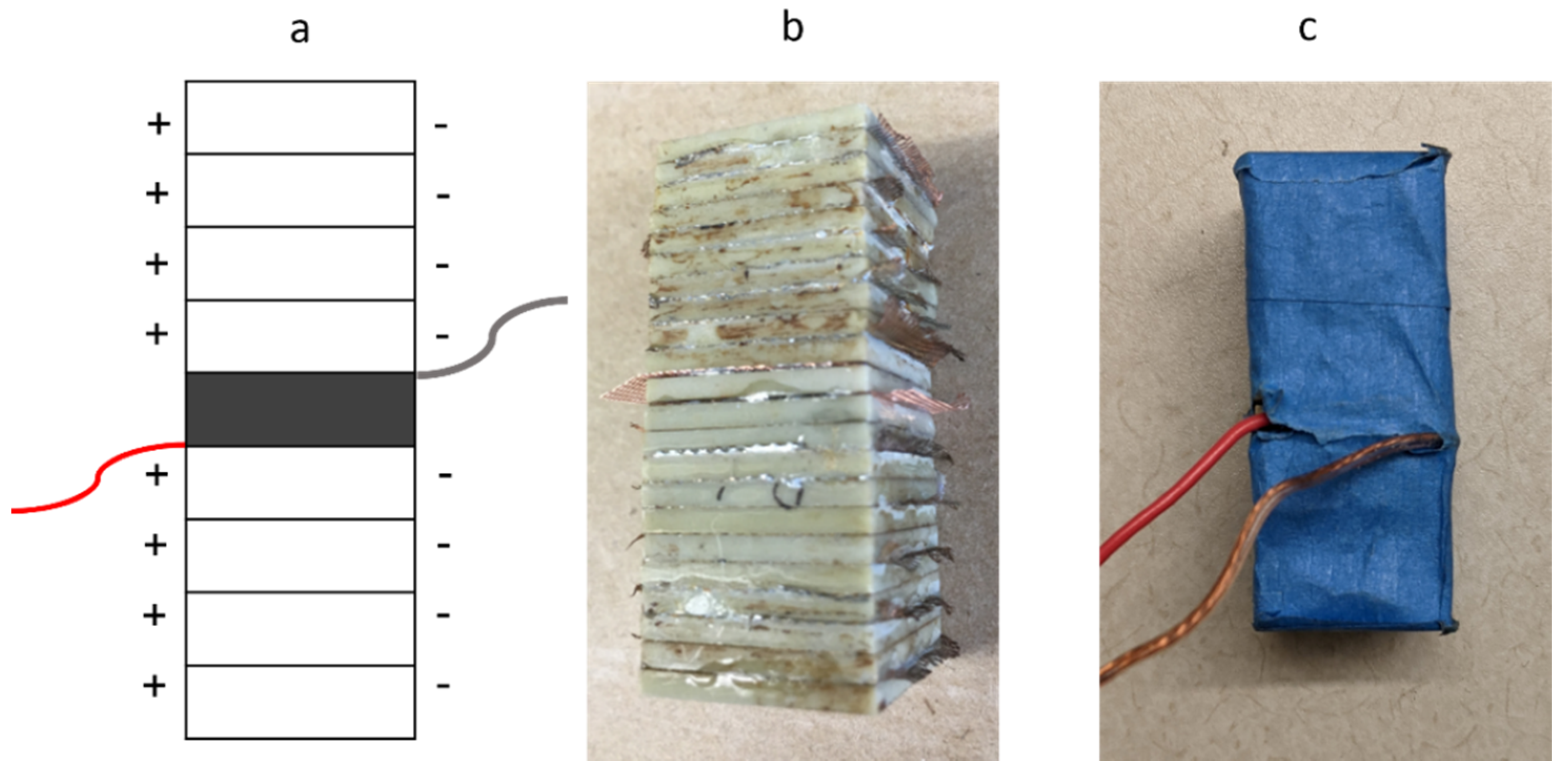
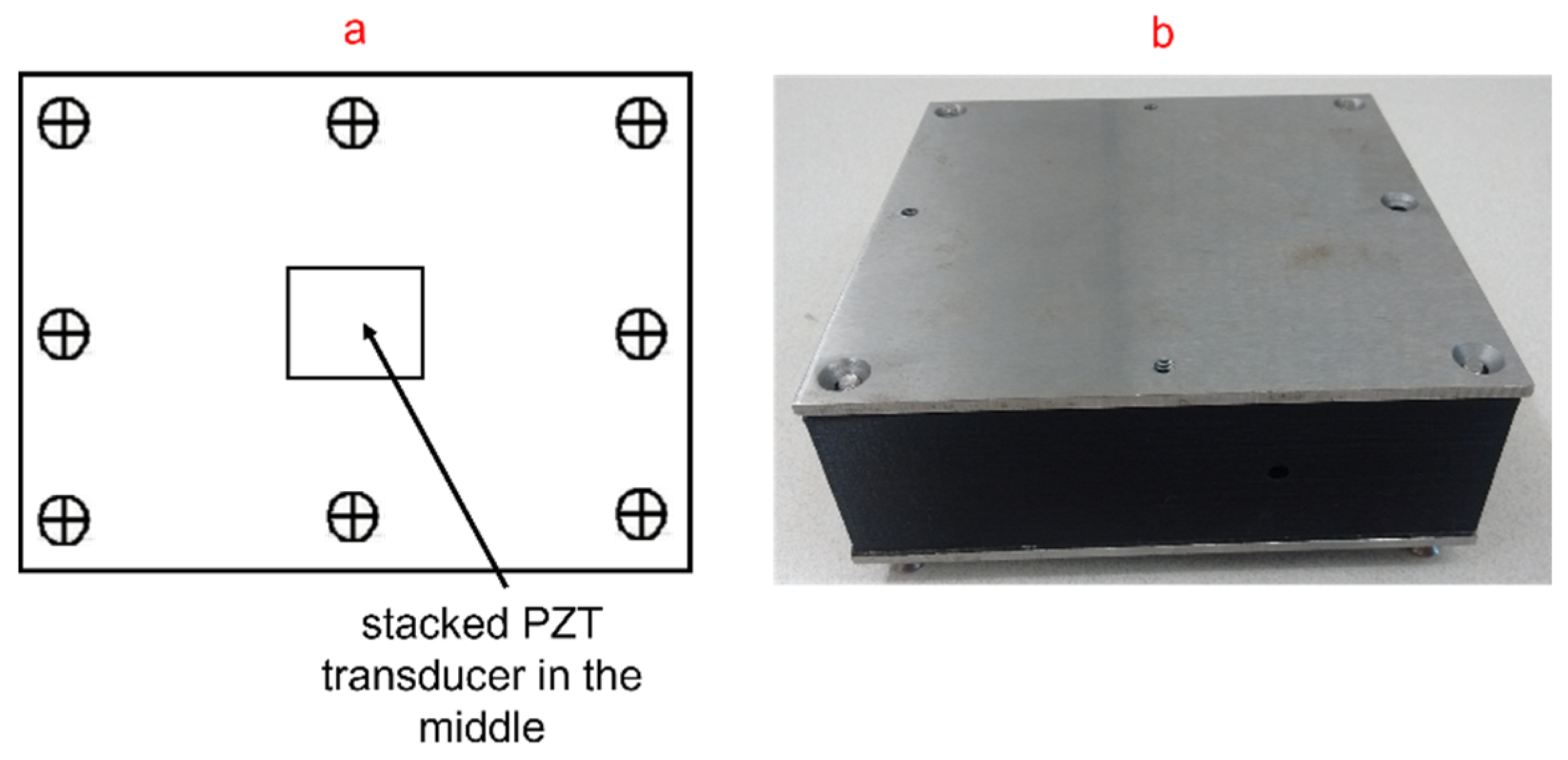

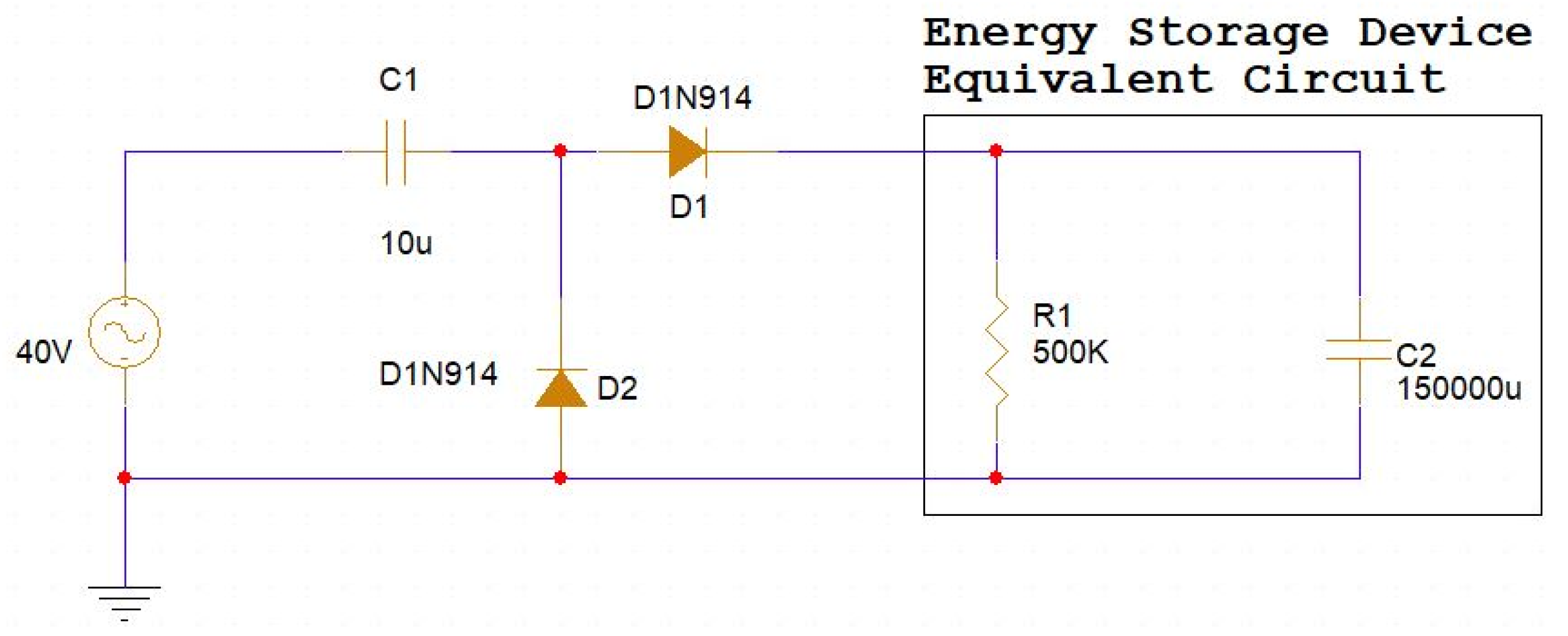
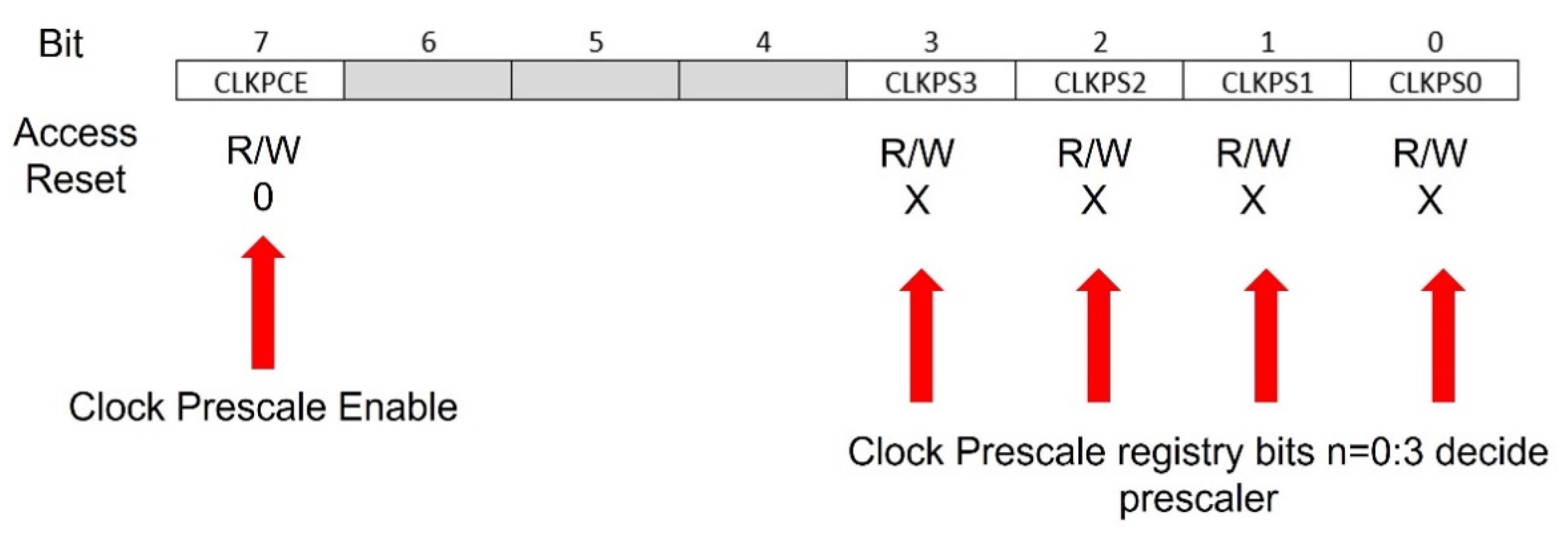

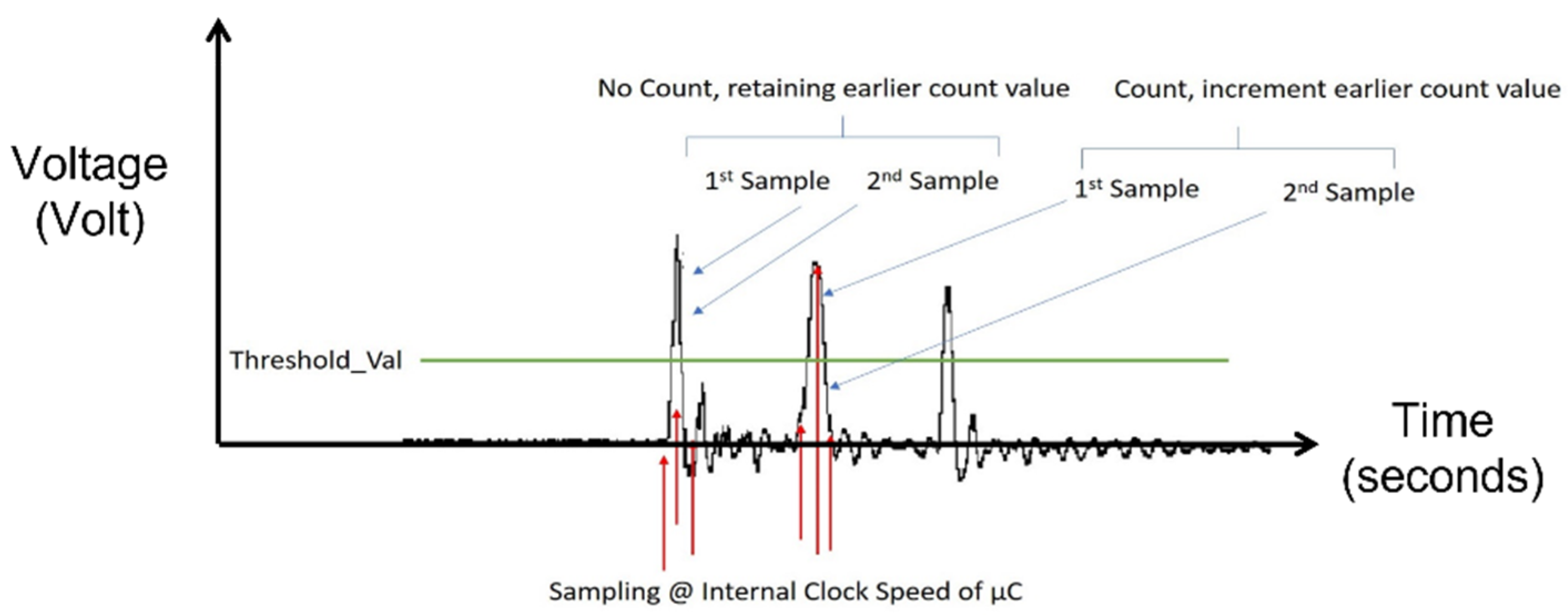
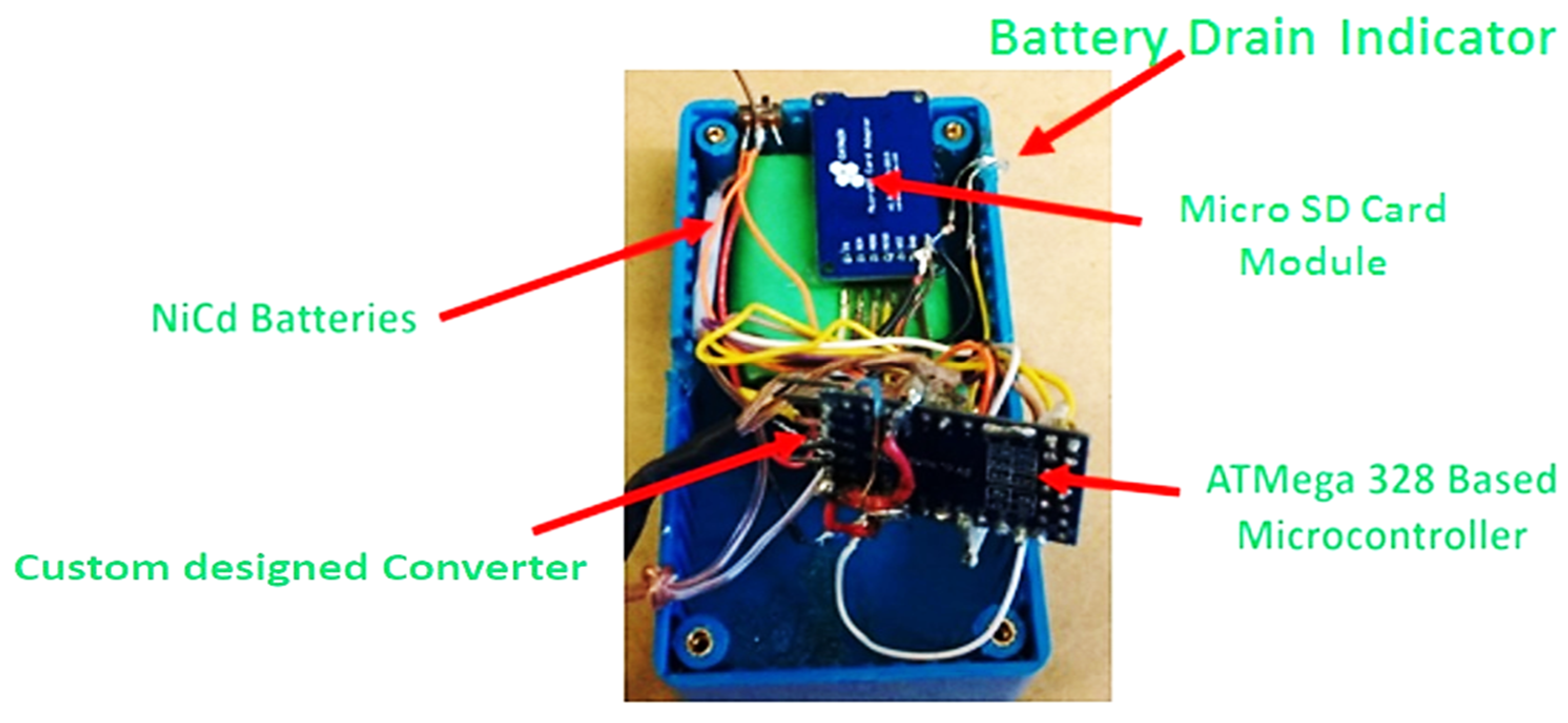

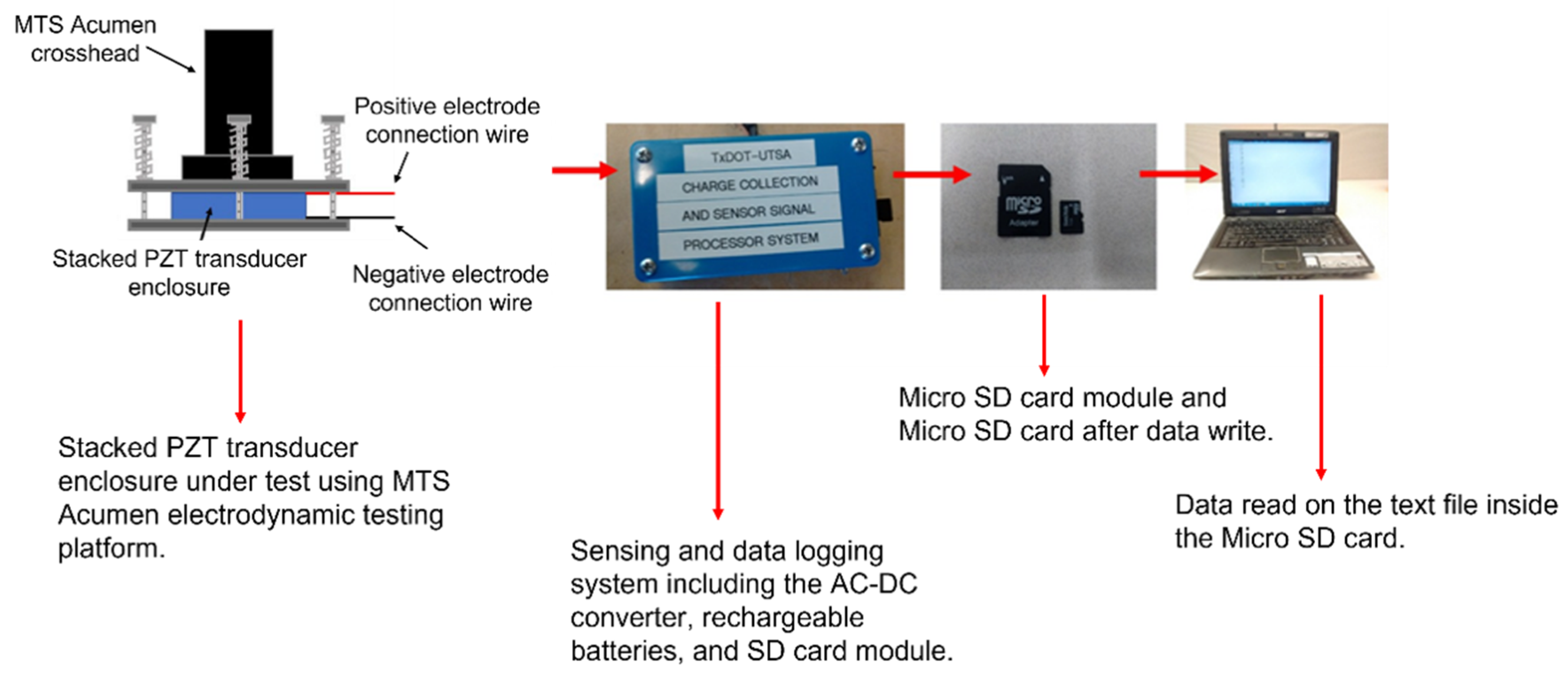



| Hardware/Process | Power Consumption |
|---|---|
| Microcontroller/Central control and processing unit | 3 mW for low-speed traffic sensing including SD Card power. 6 mW for high-speed traffic sensing up to 100 mph |
| SD card module Read/Write | 15 mW for 5–10 s for data transfer once in an hour |
| Bluetooth Module (HC-06) | 30–40 mW transmission power for 20 s once a day |
| # | Parameter | Value |
|---|---|---|
| 1 | Speed Limit (mph) | 75 |
| 2 | Average truck speed (mph) | 66.5 |
| 3 | Design lane (outside lane) ADT | 4208 |
| 4 | Design Lane (outside lane) ADTT | 1599 |
| 5 | Tire pressure (PSI) (vary from truck to car) | 30–120 |
Publisher’s Note: MDPI stays neutral with regard to jurisdictional claims in published maps and institutional affiliations. |
© 2022 by the authors. Licensee MDPI, Basel, Switzerland. This article is an open access article distributed under the terms and conditions of the Creative Commons Attribution (CC BY) license (https://creativecommons.org/licenses/by/4.0/).
Share and Cite
Dipon, W.; Gamboa, B.; Guo, R.; Bhalla, A. Energy Harvesting Using a Stacked PZT Transducer for Self-Sustainable Remote Multi-Sensing and Data Logging System. J. Compos. Sci. 2022, 6, 49. https://doi.org/10.3390/jcs6020049
Dipon W, Gamboa B, Guo R, Bhalla A. Energy Harvesting Using a Stacked PZT Transducer for Self-Sustainable Remote Multi-Sensing and Data Logging System. Journal of Composites Science. 2022; 6(2):49. https://doi.org/10.3390/jcs6020049
Chicago/Turabian StyleDipon, Wasim, Bryan Gamboa, Ruyan Guo, and Amar Bhalla. 2022. "Energy Harvesting Using a Stacked PZT Transducer for Self-Sustainable Remote Multi-Sensing and Data Logging System" Journal of Composites Science 6, no. 2: 49. https://doi.org/10.3390/jcs6020049







